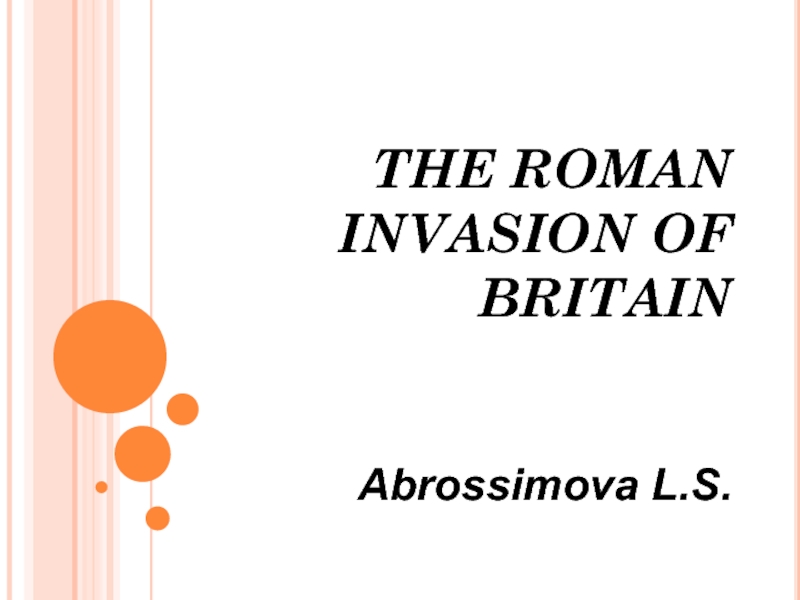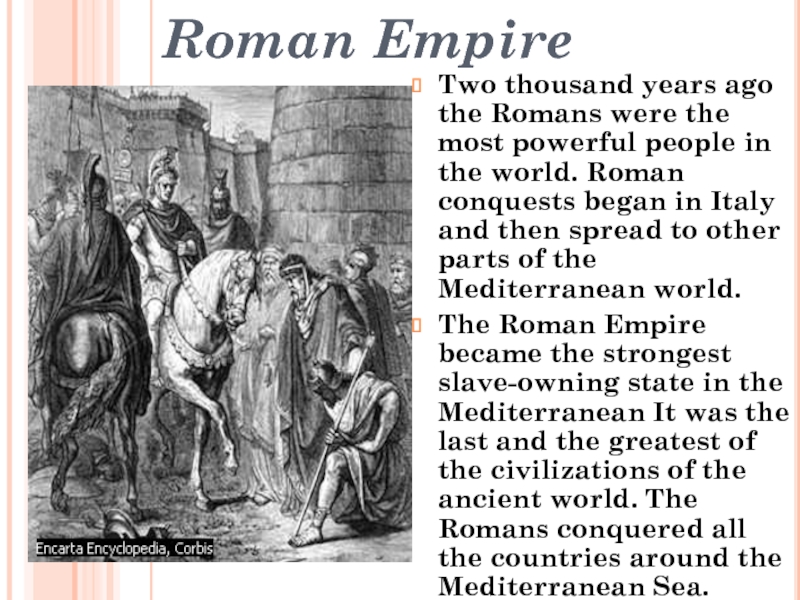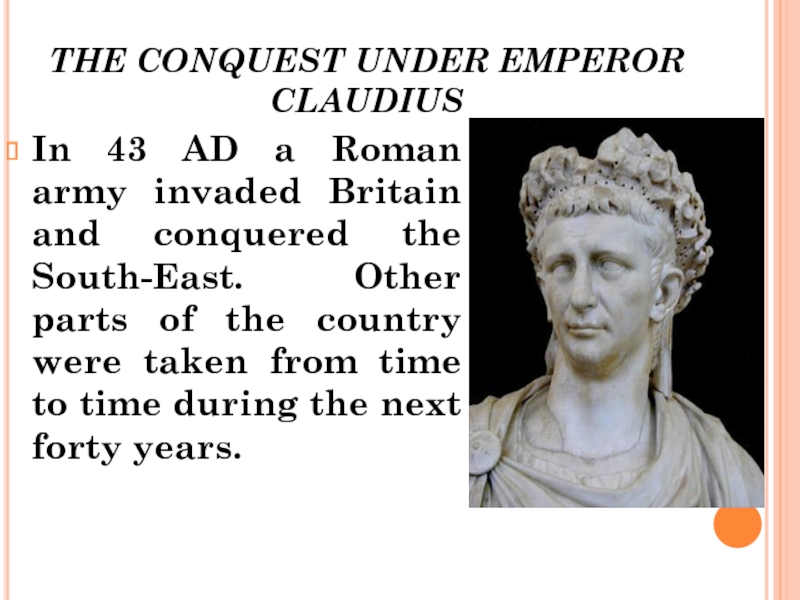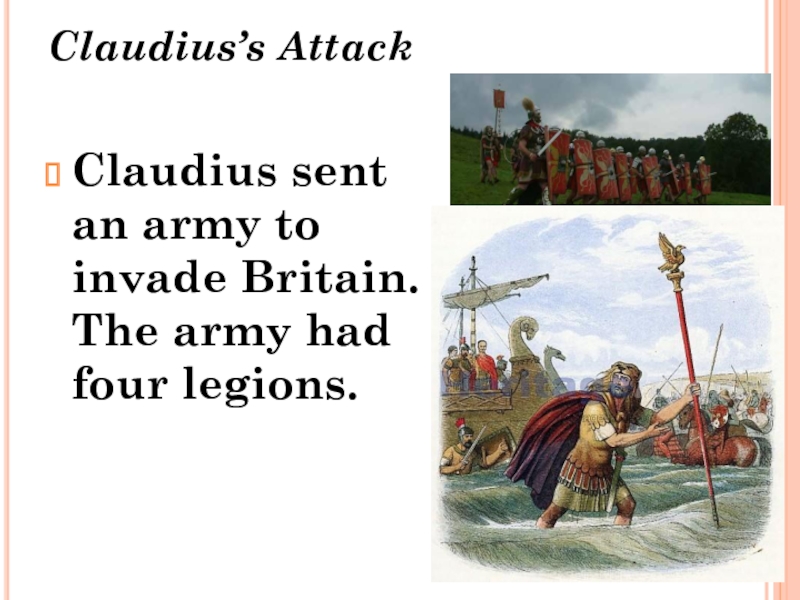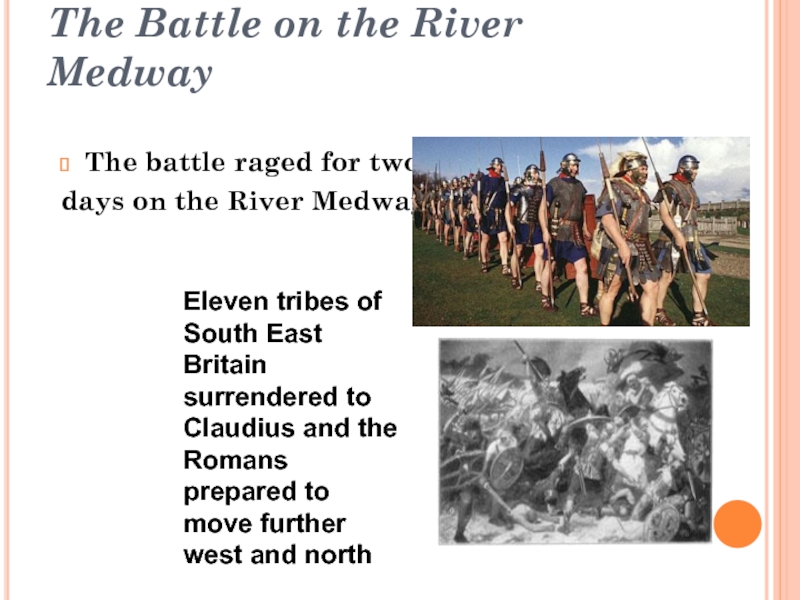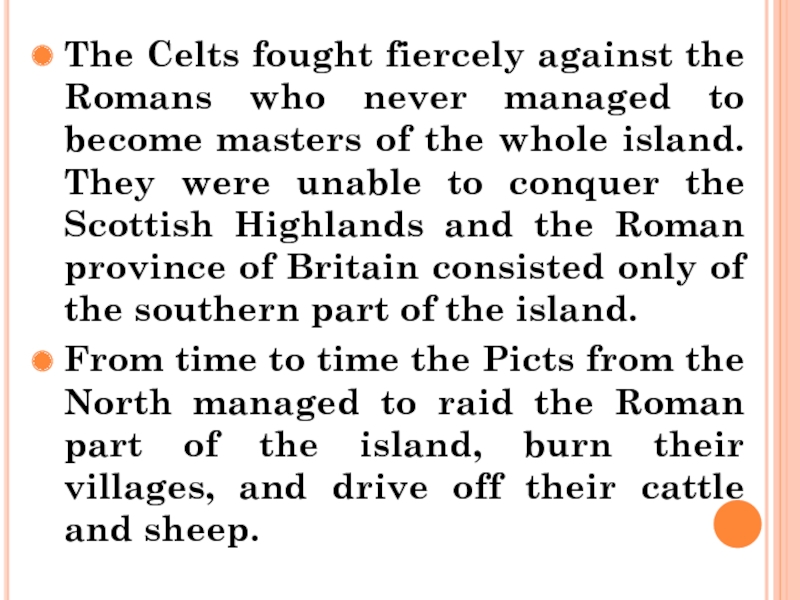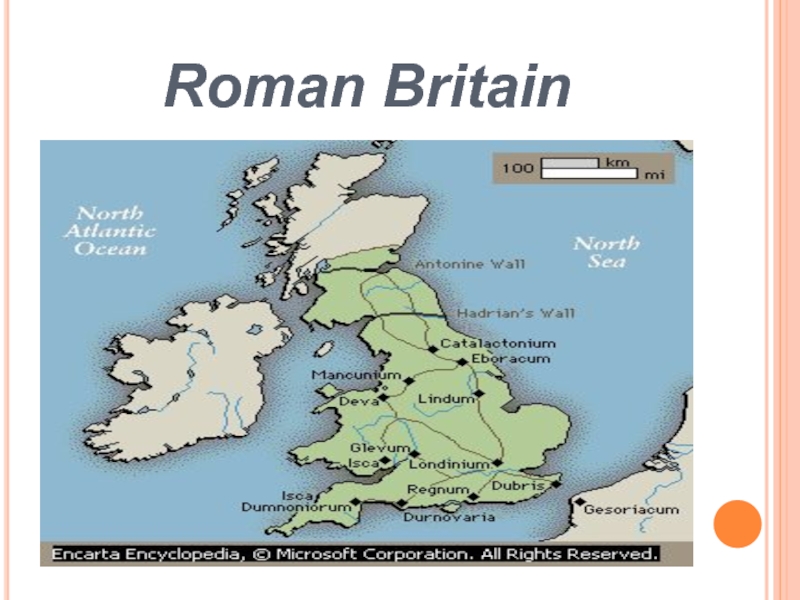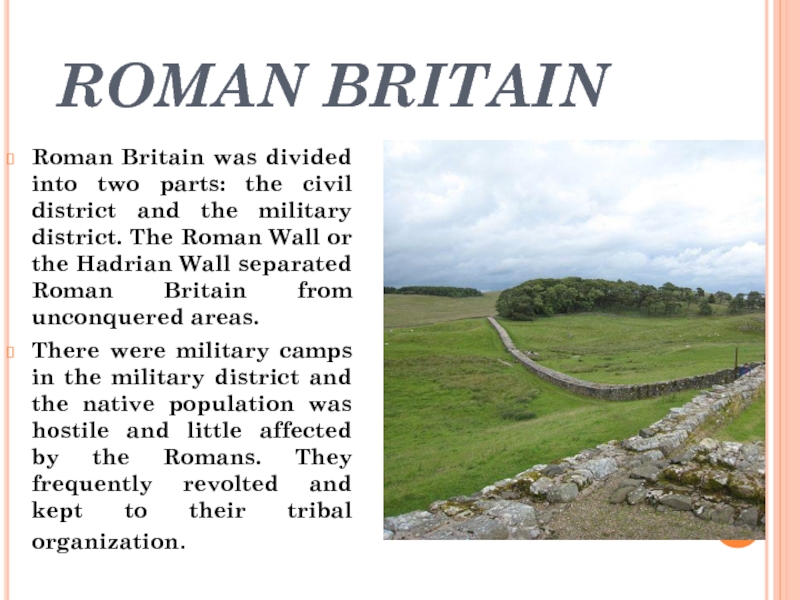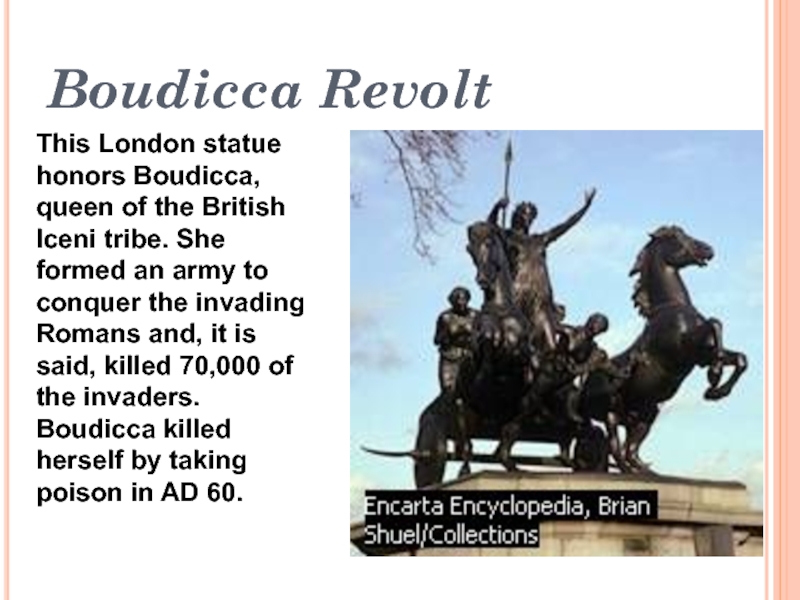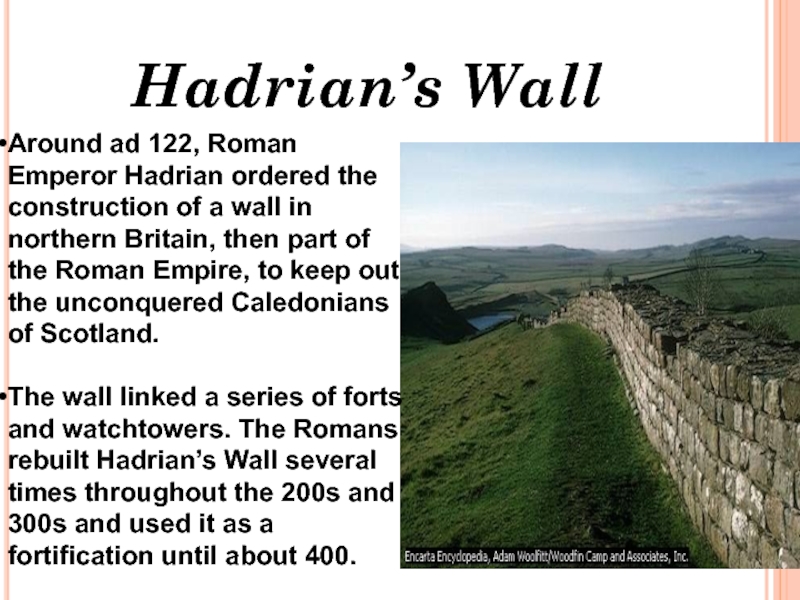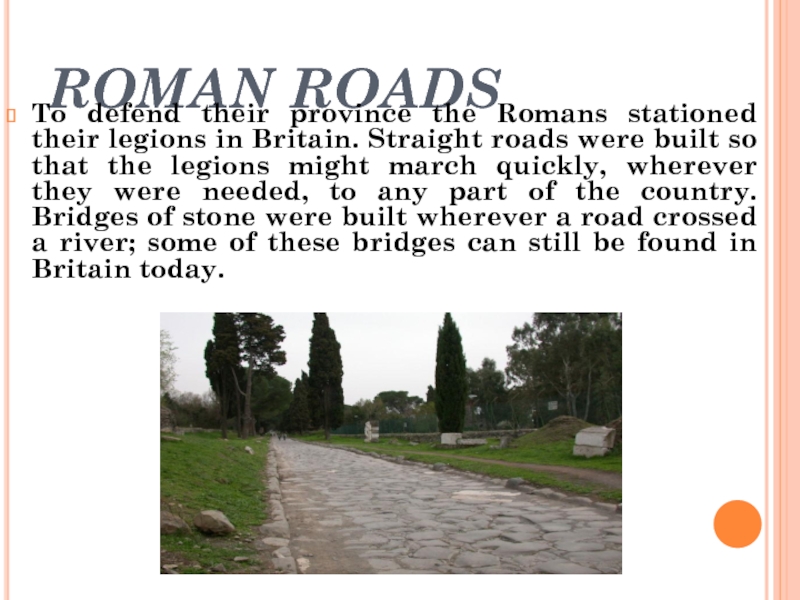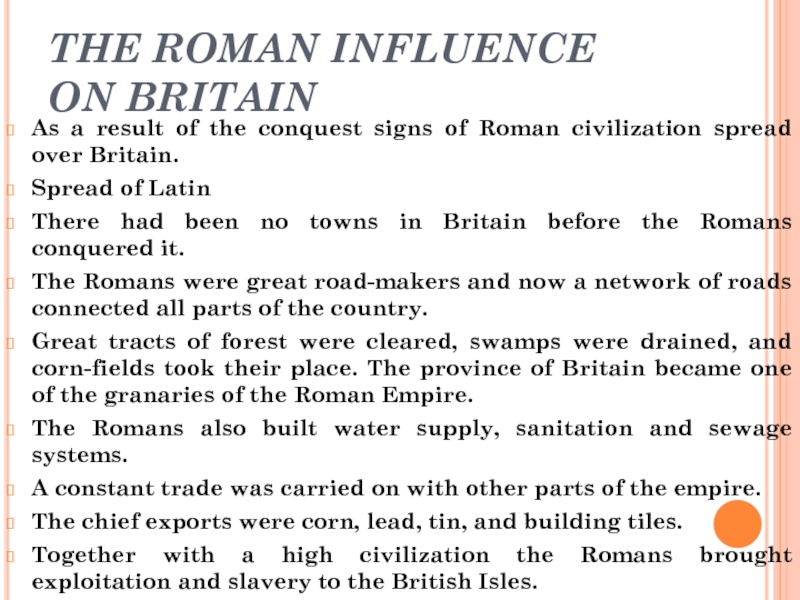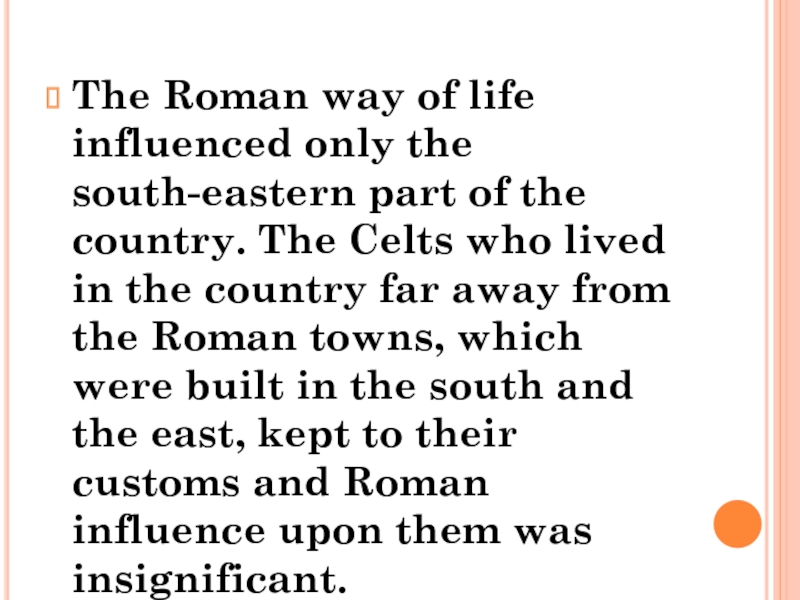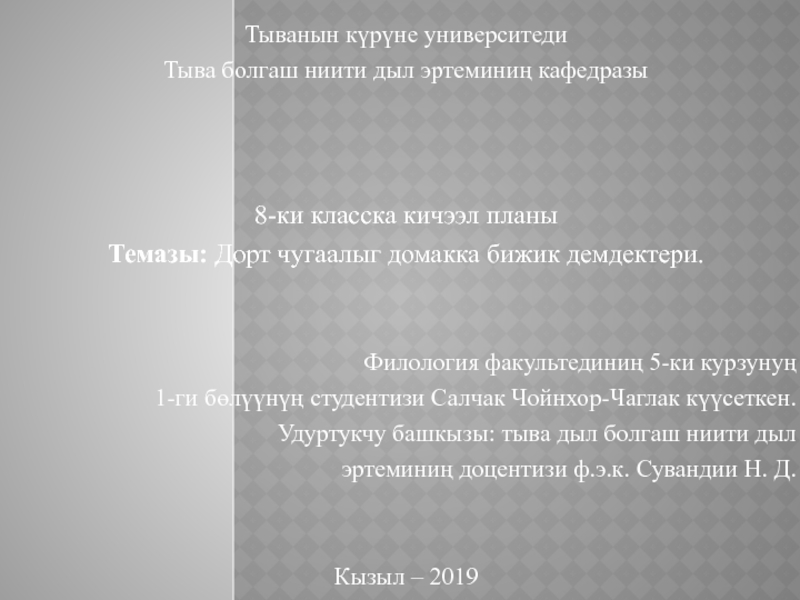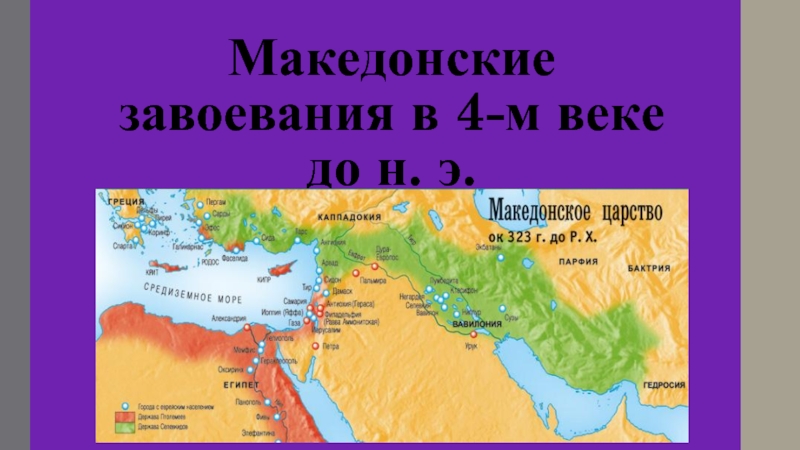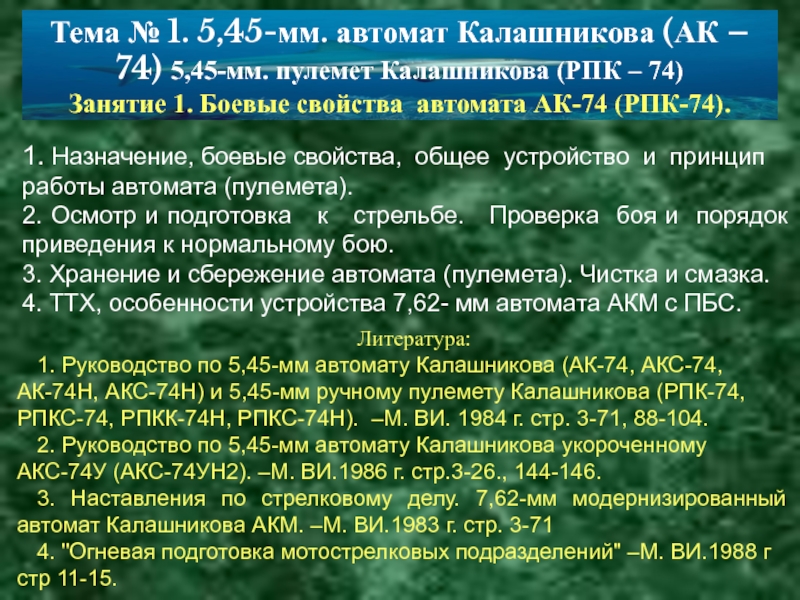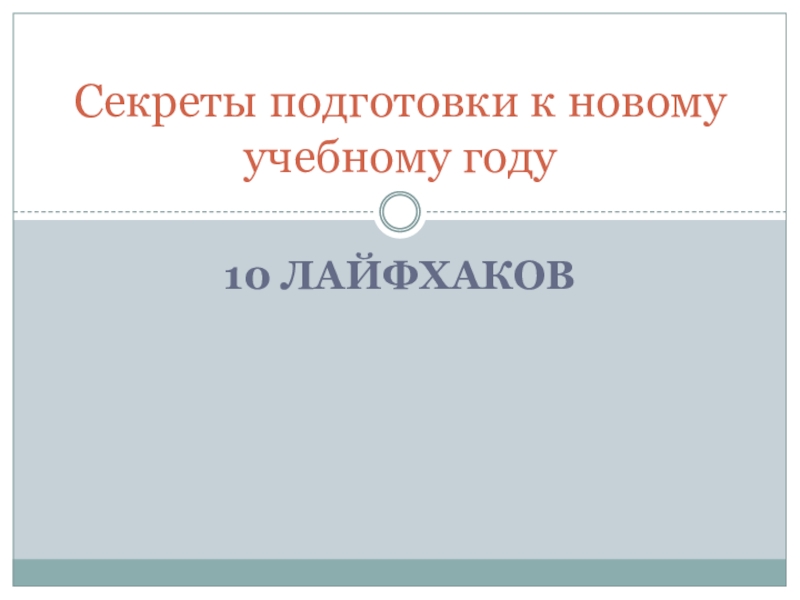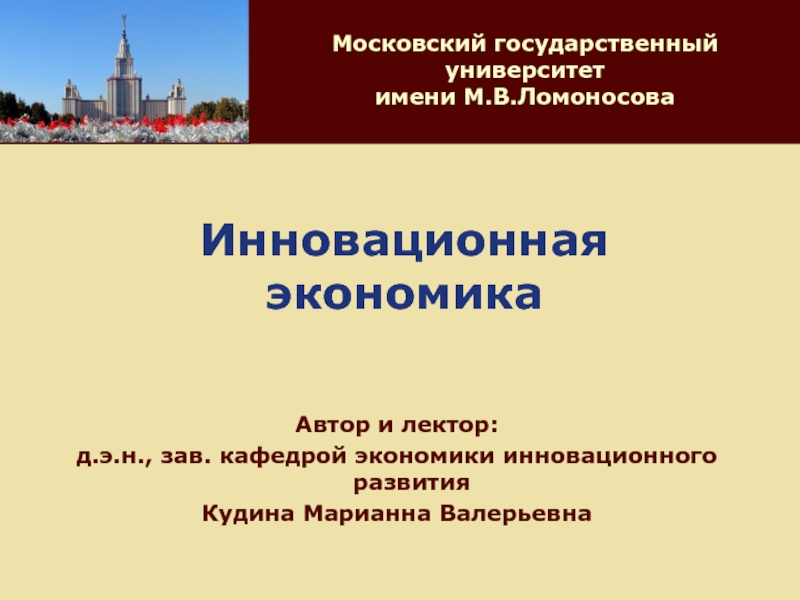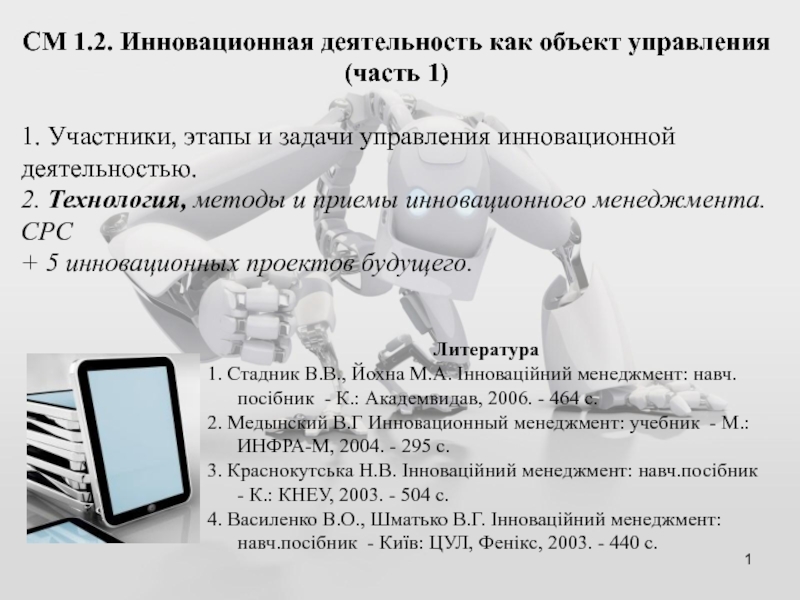Слайд 1THE ROMAN INVASION OF BRITAIN
Abrossimova L.S.
Слайд 2Roman Empire
Two thousand years ago the Romans were the most
powerful people in the world. Roman conquests began in Italy
and then spread to other parts of the Mediterranean world.
The Roman Empire became the strongest slave-owning state in the Mediterranean It was the last and the greatest of the civilizations of the ancient world. The Romans conquered all the countries around the Mediterranean Sea.
Слайд 3THE FIRST ATTEMPTS TO CONQUER BRITAIN
In 55 B.C. a Roman
army of 10,000 men crossed the Channel and invaded Britain.
But the Celts attacked the Romans and the well-armed Romans had to return to Gaul.
The next year, in 54 BC, Caesar again came to Britain, this time with larger forces (25,000 men). The Celts fought bravely for their independence but they failed.
Julius Caesar was not really able to conquer Britain. The real conquest of Britain by the Romans began only more than one century after Caesar's invasion.
Слайд 4THE CONQUEST UNDER EMPEROR CLAUDIUS
In 43 AD a Roman army
invaded Britain and conquered the South-East. Other parts of the
country were taken from time to time during the next forty years.
Слайд 5Claudius’s Attack
Claudius sent an army to invade Britain. The
army had four legions.
Слайд 6The Battle on the River Medway
The battle raged for two
days on the River Medway
Eleven tribes of South East
Britain surrendered to Claudius and the Romans prepared to move further west and north
Слайд 7The Celts fought fiercely against the Romans who never managed
to become masters of the whole island. They were unable
to conquer the Scottish Highlands and the Roman province of Britain consisted only of the southern part of the island.
From time to time the Picts from the North managed to raid the Roman part of the island, burn their villages, and drive off their cattle and sheep.
Слайд 9 ROMAN BRITAIN
Roman Britain was divided into two parts: the
civil district and the military district. The Roman Wall or
the Hadrian Wall separated Roman Britain from unconquered areas.
There were military camps in the military district and the native population was hostile and little affected by the Romans. They frequently revolted and kept to their tribal organization.
Слайд 10Boudicca Revolt
This London statue honors Boudicca, queen of the British
Iceni tribe. She formed an army to conquer the invading
Romans and, it is said, killed 70,000 of the invaders. Boudicca killed herself by taking poison in AD 60.
Слайд 11Hadrian’s Wall
Around ad 122, Roman Emperor Hadrian ordered the construction
of a wall in northern Britain, then part of the
Roman Empire, to keep out the unconquered Caledonians of Scotland.
The wall linked a series of forts and watchtowers. The Romans rebuilt Hadrian’s Wall several times throughout the 200s and 300s and used it as a fortification until about 400.
Слайд 12ROMAN TOWNS
In the civil district towns grew along the Roman
roads. York, Gloucester, Lincoln and London became the chief Roman
towns.
London became a center for trade both by road and river.
Gloucester, York and Lincoln sprang up round the Roman military camps.
Слайд 14ROMAN BATHS
The Romans also built water supply, sanitation and sewage
systems.
The rich merchants and official had luxurious houses which contained
many rooms, with mosaic floors and central heating. Every Roman town had a drainage system and a good supply of pure water.
Temples and public baths could be found in most towns.
Слайд 15ROMAN ROADS
To defend their province the Romans stationed their legions
in Britain. Straight roads were built so that the legions
might march quickly, wherever they were needed, to any part of the country. Bridges of stone were built wherever a road crossed a river; some of these bridges can still be found in Britain today.
Слайд 16THE ROMAN INFLUENCE
ON BRITAIN
As a result of the conquest
signs of Roman civilization spread over Britain.
Spread of Latin
There
had been no towns in Britain before the Romans conquered it.
The Romans were great road-makers and now a network of roads connected all parts of the country.
Great tracts of forest were cleared, swamps were drained, and corn-fields took their place. The province of Britain became one of the granaries of the Roman Empire.
The Romans also built water supply, sanitation and sewage systems.
A constant trade was carried on with other parts of the empire.
The chief exports were corn, lead, tin, and building tiles.
Together with a high civilization the Romans brought exploitation and slavery to the British Isles.
Слайд 17END OF ROMAN RULE
. In the 3-d and 4-th centuries
the power of the Roman Empire gradually weakened.
Early in the
5-th century (407) the Roman legions were recalled from Britain to defend the central provinces of the Roman Empire from the attacks of barbarian tribes.
They did not return to Britain.
Слайд 18The Roman way of life influenced only the south-eastern part
of the country. The Celts who lived in the country
far away from the Roman towns, which were built in the south and the east, kept to their customs and Roman influence upon them was insignificant.
